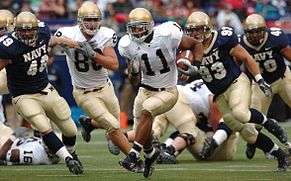Male bonding

In ethology and social science, male bonding is the formation of close personal relationships, and patterns of friendship or cooperation between males.
In the context of human relationships, male bonding is used to describe friendship between men, or the way in which men befriend each other. The expression is sometimes used synonymous with the word camaraderie. The first widely noticed use of the term was in Men in Groups (1969; 2004) by anthropologist Lionel Tiger.
Male bonding takes place in various locations such as gyms, locker rooms, sport fields or courts, fraternities, and barbershops. Friendships among men are often primarily based on shared activities and ambitions, instead of emotional sharing (which is common of women's friendships).[citation needed] This can include playing musical instruments, video games, business ventures, creative endeavors, journeys, quests, sporting activities, fishing, hunting, camping, gambling, social drinking, smoking cigars or working with tools. Male bonding is seen throughout many different cultures and different parts of the world.
Social skills
Much of male bonding is associated with the fact the males want a male friend, someone they can talk about life with without the judgement of masculinity within a patriarchal society.[1] Male bonding is very essential when it comes to the development of social skills among men. The "Male Bonding around the Campfire" study shows that male bonding is nothing more than men getting together to recapture their masculinity and power that comes with being a man in society. Usually you see more male bonding groups developing when masculinity is being threatened or in a decline. Although threatened, Xinqiang Chang believes that male bonding can rarely die off or be destroyed and by a chance it is, it can be restored through heterosexual marriage.[2]
In culture
In the early Chinese culture, male bonding is seen among those in same class based on gender identity, social status and age.[3] In the Jewish religion, they are building an inter-generational community among men. This is a place that men can get together and talk about things other than their family and work. Its a place were they can explore themselves and share experiences with one another.[4] In Tuscany in the 19th century every year around October shepherds come together in an all male group with their cattle and take it south of their mountain villages. These Italian men leave their children and wives for about 6 months a year to do this. Joan Weibel-Orlando says that male groups and male bonding are very important for Italian men and their culture. From boar hunting clubs to gathering at a bar on a daily these men want free time with their compadres.[5]
Among sports

Male bonding is seen through sports such as football, baseball and basketball. Most recently male bonding has been tied to Super Bowl and sport game parties.[6] In football, men bond by watching the physical contact of other men a distance away playing on the field. Also during half time males bond by watching the dancers and share the experience of being aroused by these women together. Sports is the most common way to see male bonding, mostly because there is more of a majority of men that like watching and playing sports such as football, baseball and basketball than women.
Versus feminism
Jackson Katz has argued that women and others have start to associate male bonding with gang rape and violence.[7] Katz has also found that some feminist feel as if male bonding is an attack on feminism from what they've seen and what they have associated with male bonding. Although many males disagree with this, they feel as if male bonding has nothing to do with feminism or women in general. They say it is about having a male friend to talk to about things you generally wouldn't talk about with your wife or women. Also related to the male bonding and sports section, males also associate the reason they need male bonding is to have someone to watch and do sports with. In social terms, feminist believe that our society encourages male dominance over women through male bonding. Xinqiang Chang argues that women take there part in positively influencing male bonding and completing the patriarchal restoration through the act of marriage which is important for the continuation of patriarchy.[2]
See also
- Bachelor herd
- Bromance
- Female bonding
- Homosociality
- Human bonding
- Mancation
- Man cave
- Masculine psychology
- Men's spaces
- Feminism
References
- ↑ Koblitz, A. H. (2006). "Male Bonding around the Campfire: Constructing Myths of Hohokam Militarism". Men and Masculinities. 9: 95. doi:10.1177/1097184X05277697.
- 1 2 Male homosociality and social hierarchy in "lady audley's secret," "adam bede," and "king solomon's mines (Thesis) – via ProQuest Dissertations & Theses A&I; ProQuest Dissertations & Theses Global.
- ↑ Huang, Martin W.; Lu, Weijing (2013). "Male-Male Sexual Bonding and Male Friendship in Late Imperial China1". Journal of the History of Sexuality. 22 (2): 312. doi:10.7560/JHS22206.
- ↑ Namm, L. (7 March 2003). "Male bonding". Jewish News of Greater Phoenix.
- ↑ Weibel-Orlando. "A Room of (His) Own: Italian and Italian-American Male-bonding Spaces and Homosociality". Journal Of Men's Studies. 16(2), 159-176.
- ↑ Rosenthal, D. J. (February 1994). "Sex, violence, and male bonding on superbowl sunday". Off our Backs. 24. p. 9.
- ↑ Wiliamson, D (1993, August 19). "Males take a bashing for bonding; display delivers wrong message about men". Telegram & Gazette. Check date values in:
|date=(help)
Further reading
- Brehm, S.S., Miller, R.S., Perlman, D. & Campbell, S.M. (1992). Intimate relationships. Third edition, chapter 7: paragraph about "gender differences in same-sex friendships", pp. 212–213.
- Fanning, Patrick & McKay, Matthew. (1993). Being a friend: Making and keeping male friends. In Being a man: A guide to the new masculinity (pp. 108–125). Oakland, CA: New Harbinger Publications, Inc.
- Garfinkel, Perry. (1992). "In a man's world: Father, son, brother, friend, and other roles men play." Berkeley, CA: Ten Speed Press.
- Miller, Stuart. (1986). "Men & friendship." Bath, England: Gateway Books.
- Nardi, Peter. (1999). Gay Men's Friendships: Invincible Communities. U. of Chicago Press.
- Nardi, Peter. (1992). "Men's friendships" (Research on men and masculinities series). Newbury Park, CA: Sage Publications.
- Pasick, Robert S. (1990). Friendship between men. In Meth, Richard L., Pasick, Robert S., et al., Men in therapy: The challenge of change (pp. 108–127). New York: The Guilford Press.
- Pasick, Robert S. (1992). Staying awake: The importance of friendship. In Awakening from the deep sleep: A powerful guide for courageous men (pp. 222–244). San Francisco, CA: HarperSanFrancisco (A division of HarperCollins, Publishers).
- Wrangham, R. & Peterson, D. (1996). Demonic Males: Apes and the Origins of Human Violence. London: Bloomsbury Publishing.
- Lionel Tiger, Men in Groups, Random House 1969; Transaction, 2004
- Potvin, John. (2008) Material and Visual Cultures Beyond Male Bonding, 1870–1914. Hampshire England, Ashgate Publishing Limited